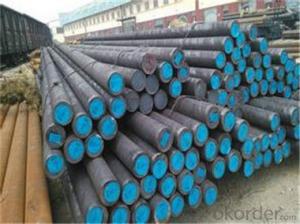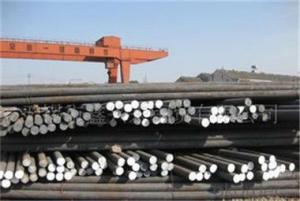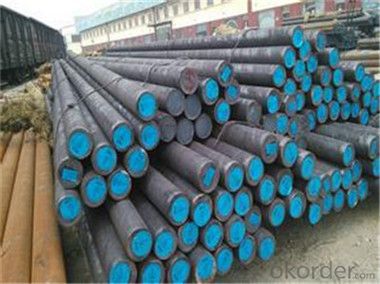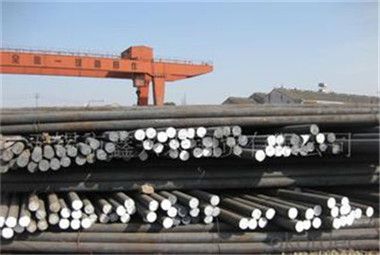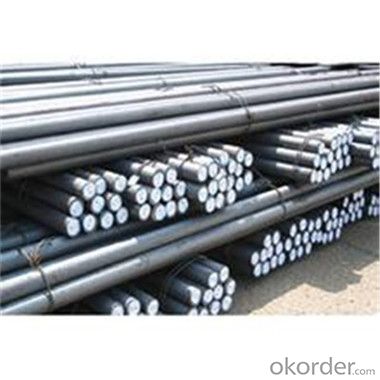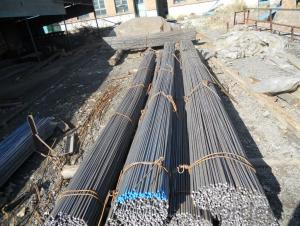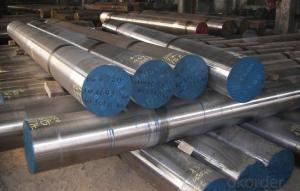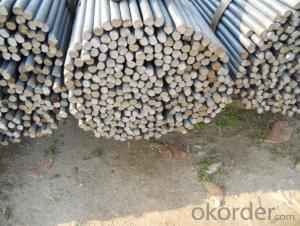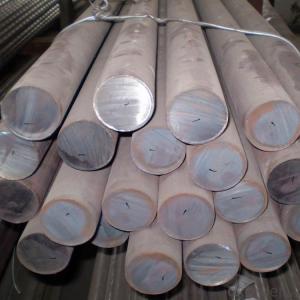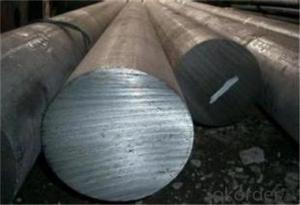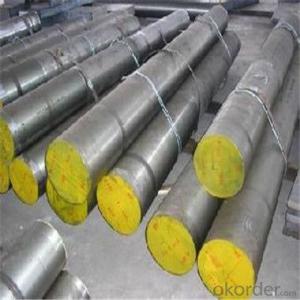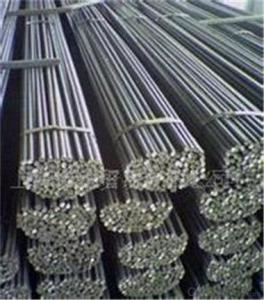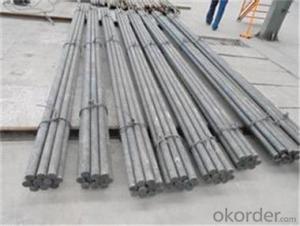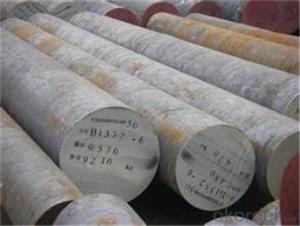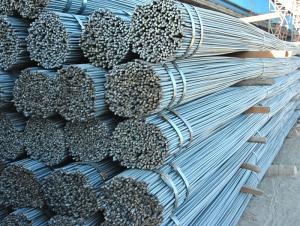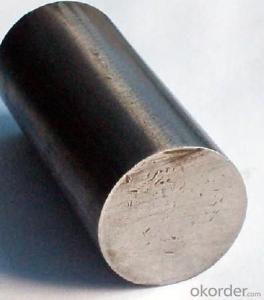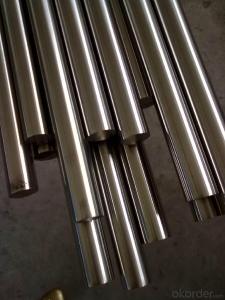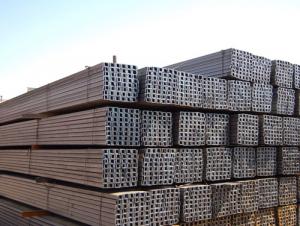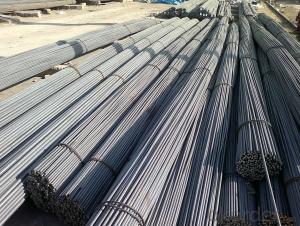HSS Steel Round Bar/High Alloy Round Tool Steel Bars
- Loading Port:
- Tianjin
- Payment Terms:
- TT OR LC
- Min Order Qty:
- 223 m.t.
- Supply Capability:
- 2000000 m.t./month
OKorder Service Pledge
OKorder Financial Service
You Might Also Like
Description of steel round bar:
Diameter:20mm-80(85)mm(rolled round steel),90-350(400)mm(forged round steel)
Length: optional
Festures of steel round bar:
Cr shaper cutter, milling cutter,screw tap,drill bit etc.Also can be used in manufacture of large scale and thermoplasticity shaped cutting tools and antiabrasive cutting tools under high load..The highest temperature is 427 degrees Celsius.it has good strength,and high quenching property ,the toughness is good and small deformation during quenching.At high temperature, there are high creep strength and endurance strength.
Specifications of steel round bar:
Annealing after forging:
heat to 840-860°c,
keep 2-4H,coolbelow to 500°c,
hardness≤285HBS
Images of steel round bar:
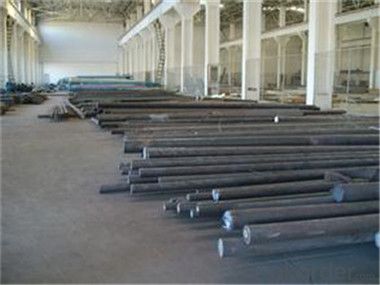
FAQ:
1. What is your package?
Packing situation: standard seaworthy packing or as customer required.
2. How long is the lead time?
Delivery time: 45 days after order confirmed.
3. What payment term do you accept?
Payment: T/T or L/C at sight.
- Q: What are the different types of carbon steel round bars?
- There are several different types of carbon steel round bars available on the market. Some of the commonly used types include: 1. Mild Steel Round Bars: These are the most common type of carbon steel round bars. They have a low carbon content and are easy to weld, cut, and form. Mild steel round bars are suitable for general engineering purposes and have excellent machinability. 2. Medium Carbon Steel Round Bars: These round bars have a higher carbon content than mild steel round bars. They offer better strength and hardness, making them suitable for applications that require higher load-bearing capacity. Medium carbon steel round bars are commonly used in automotive, construction, and machinery industries. 3. High Carbon Steel Round Bars: These round bars have a higher carbon content, typically above 0.60%. They offer superior strength, hardness, and wear resistance. High carbon steel round bars are commonly used in applications that require high strength, such as springs, cutting tools, and axles. 4. Free Cutting Steel Round Bars: These round bars have added elements, such as sulfur or lead, to improve machinability. They are commonly used in applications where easy machining is required, such as in the production of bolts, screws, and fittings. 5. Alloy Steel Round Bars: These round bars contain additional alloying elements, such as chromium, nickel, or molybdenum, to enhance specific properties. Alloy steel round bars offer improved strength, hardness, corrosion resistance, and heat resistance. They are commonly used in applications that require high performance, such as in the aerospace, oil and gas, and automotive industries. It is important to consider the specific requirements of your project or application when selecting the type of carbon steel round bar to ensure optimal performance and durability.
- Q: Are steel round bars suitable for welding applications?
- Steel round bars are a great choice for welding. They are commonly used in welding applications because they are strong and durable. You can easily weld them to other steel components or structures using different welding processes like arc welding, MIG welding, or TIG welding. Steel round bars also have good mechanical properties, including excellent tensile strength. This makes them suitable for welding applications where strength and load-bearing capacity are important. They come in various sizes and grades, so you can use them for different welding projects. However, it's important to choose the right type of steel round bar for your specific welding application and desired final product properties.
- Q: Are steel round bars suitable for the production of springs?
- Indeed, springs can be produced using steel round bars. Steel, renowned for its exceptional strength and durability, finds widespread application in spring manufacturing. The circular configuration of these bars facilitates effortless shaping and molding, rendering them an ideal choice for spring production procedures. Steel round bars can be conveniently machined and heat-treated to impart the desired spring attributes, including elasticity and resilience. Furthermore, steel boasts a remarkable tensile strength, enabling it to endure substantial loads. Consequently, it proves well-suited for applications necessitating robust and dependable springs.
- Q: What are the advantages of using high-speed steel round bars?
- There are several advantages of using high-speed steel (HSS) round bars in various applications. Firstly, HSS round bars are known for their exceptional hardness and wear resistance. This makes them ideal for cutting, shaping, and machining operations that involve high-speed and high-temperature conditions. HSS round bars can withstand the heat generated during these processes without losing their hardness or dulling quickly, resulting in improved tool life and reduced downtime for tool changes. Secondly, HSS round bars have excellent strength and toughness properties. This enables them to handle heavy loads and resist deformation, even under demanding applications. The strength and toughness of HSS round bars make them suitable for use in industries such as aerospace, automotive, and manufacturing, where precision and reliability are critical. Thirdly, HSS round bars offer superior cutting performance. Due to their high hardness, HSS round bars can retain a sharp cutting edge for an extended period. This allows for efficient and precise cutting, reducing the chances of inaccuracies or errors in the workpiece. The sharp cutting edge also contributes to improved surface finish and dimensional accuracy. Additionally, HSS round bars have good thermal conductivity, meaning they can efficiently dissipate heat generated during cutting or machining operations. This prevents overheating, which can lead to premature tool failure or damage. The ability of HSS round bars to manage heat buildup helps maintain the integrity of the tool and extends its lifespan. Lastly, HSS round bars are readily available and cost-effective compared to other high-performance tool materials like carbide. This makes them a popular choice for a wide range of applications, especially in industries where cost considerations are significant. In conclusion, the advantages of using high-speed steel round bars include exceptional hardness and wear resistance, excellent strength and toughness, superior cutting performance, good thermal conductivity, and cost-effectiveness. These advantages make HSS round bars a preferred choice for professionals and industries that require reliable and efficient cutting and machining tools.
- Q: Can steel round bars be used for making medical equipment?
- Yes, steel round bars can be used for making medical equipment. Steel is a versatile and durable material that is commonly used in the manufacturing of medical instruments and equipment. It possesses excellent strength and can withstand high levels of stress and pressure, making it suitable for a wide range of medical applications. Additionally, steel is resistant to corrosion and can be easily sterilized, ensuring that the medical equipment remains hygienic and safe for use. Steel round bars can be machined, shaped, and formed into various medical instruments such as surgical tools, implants, braces, and prosthetics. Therefore, steel round bars are a viable option for producing medical equipment due to their strength, durability, and compatibility with sterilization processes.
- Q: What is the hardness of a steel round bar?
- The hardness of a steel round bar may differ depending on the type of steel and the manufacturing process utilized. To measure the hardness of steel, the Rockwell hardness scale is commonly employed. This scale determines the depth of indentation caused by a specific load on a diamond or steel ball. Steel round bars generally exhibit hardness values ranging from approximately 20 to 60 Rockwell C (HRC), with higher values indicating greater hardness. However, it is crucial to acknowledge that the hardness of a steel round bar can also be affected by factors such as heat treatment, alloying elements, and any applied surface treatments. Consequently, it is imperative to refer to the manufacturer or supplier's specified hardness specifications to accurately ascertain the hardness of a steel round bar.
- Q: Are steel round bars suitable for bicycle frame applications?
- Yes, steel round bars are suitable for bicycle frame applications. Steel is a commonly used material for bicycle frames due to its strength, durability, and ability to absorb vibrations. Round bars provide a strong and rigid structure, allowing for a stable and reliable frame that can withstand the stresses and strains of regular use.
- Q: Can steel round bars be used for making electrical components?
- Whether steel round bars can be used for making certain electrical components depends on the specific requirements and applications. Steel is a versatile material that possesses good electrical conductivity and high durability, making it well-suited for a variety of electrical applications. However, when it comes to components that necessitate specific electrical properties or insulation, copper or aluminum may be more commonly utilized. Furthermore, in order to prevent corrosion or enhance electrical conductivity, it may be necessary to subject steel round bars to surface treatments or coatings. Ultimately, the appropriateness of utilizing steel round bars for manufacturing electrical components should be evaluated in accordance with the specific requirements and regulations of the intended application.
- Q: How many tons of pressure can the round steel of 70 inches bear?
- If the steel will generally approximate compressive strength considering tensile strength, even if is only 4 tons / square centimeters, each round cross section of 26 mm diameter is 5.3 cm, maximum 5.3*4 about 20 tons of pressure, the actual use should take into account the safety factor;
- Q: How do steel round bars perform under fatigue loading?
- Steel round bars generally perform well under fatigue loading, especially if they are made from high-quality steel. Fatigue loading refers to the repeated application of stress or strain on a material, which can lead to failure over time. Steel round bars are known for their excellent fatigue strength, which is the ability to withstand cyclic loading without developing cracks or failures. This is mainly due to the inherent properties of steel, such as its high strength, ductility, and toughness. Under fatigue loading, steel round bars undergo cyclic stress, which causes the material to experience alternating tension and compression. However, steel has a relatively high endurance limit, also known as fatigue strength coefficient, which determines the maximum stress level that the material can withstand without failure, even under cyclic loading. Steel round bars also have good resistance to fatigue crack propagation. This means that if a crack does initiate due to cyclic loading, it is less likely to propagate or grow quickly compared to other materials. This is due to the material's ability to absorb energy and redistribute stress, preventing the crack from growing and ultimately leading to failure. However, it is important to note that the performance of steel round bars under fatigue loading can be influenced by various factors. These include the specific type and grade of steel used, the manufacturing process, surface conditions, and the applied stress or strain levels. It is crucial to design and use steel round bars in accordance with industry standards and guidelines to ensure their optimal performance and safety under fatigue loading.
Send your message to us
HSS Steel Round Bar/High Alloy Round Tool Steel Bars
- Loading Port:
- Tianjin
- Payment Terms:
- TT OR LC
- Min Order Qty:
- 223 m.t.
- Supply Capability:
- 2000000 m.t./month
OKorder Service Pledge
OKorder Financial Service
Similar products
Hot products
Hot Searches
Related keywords
